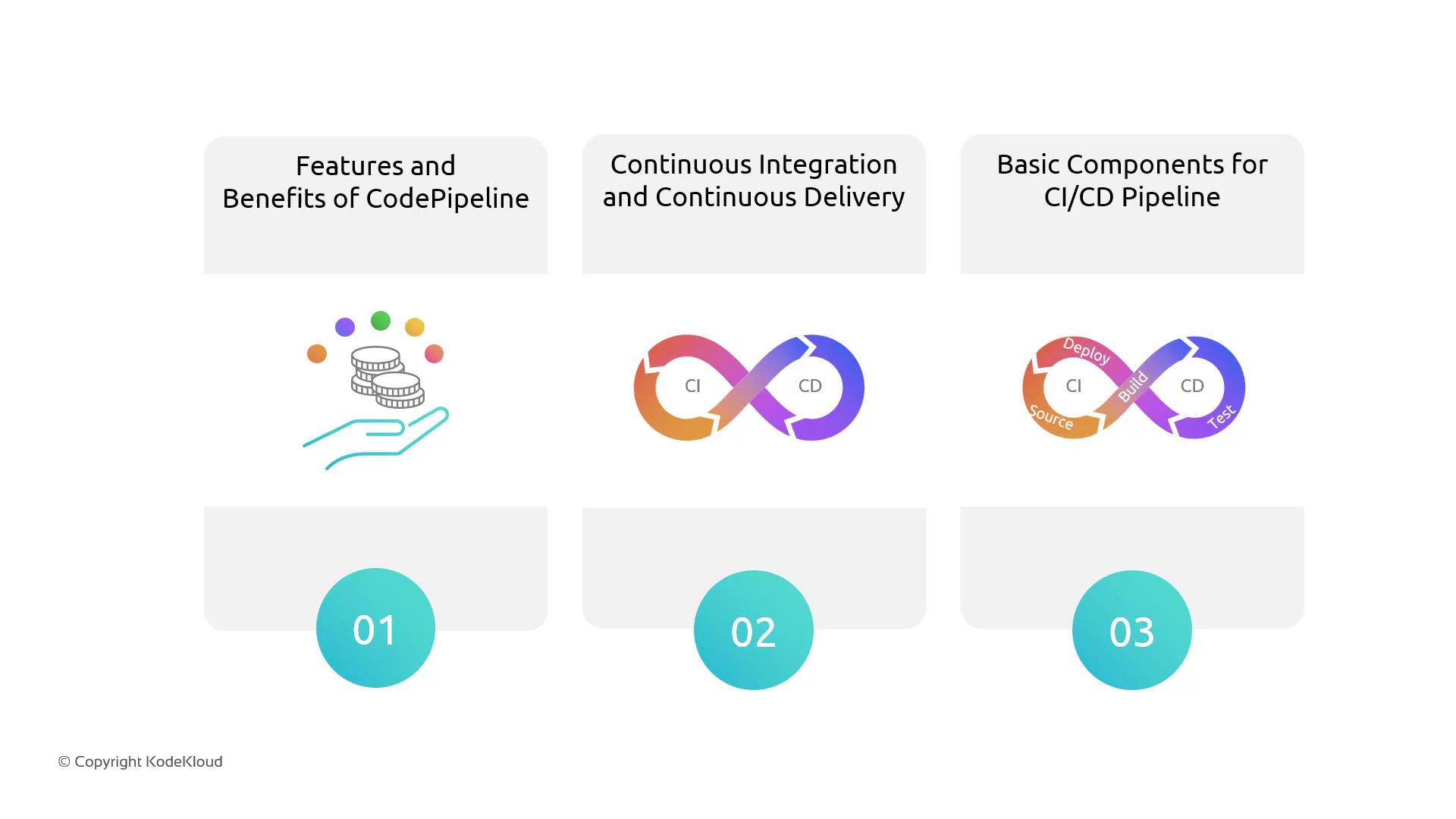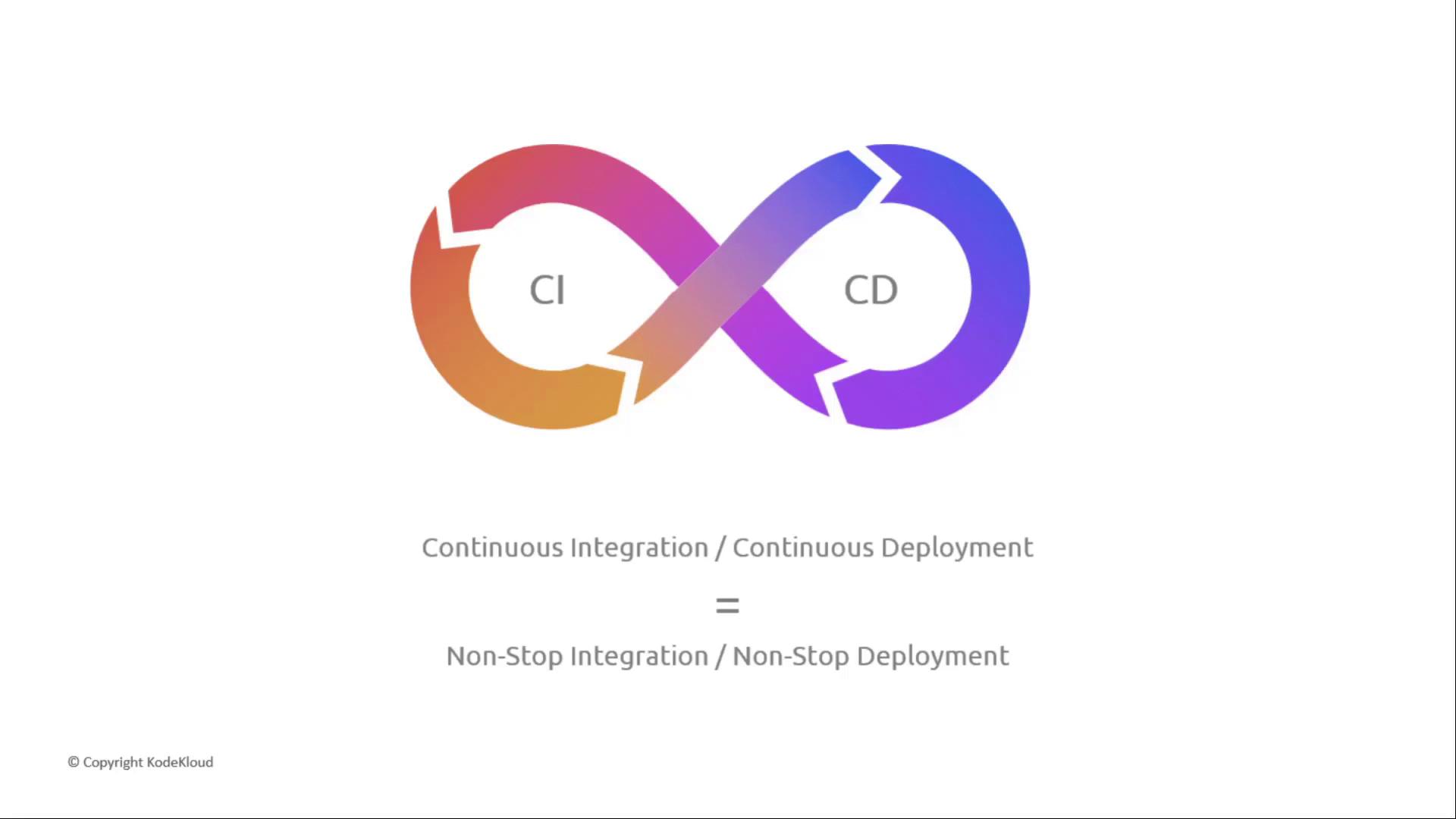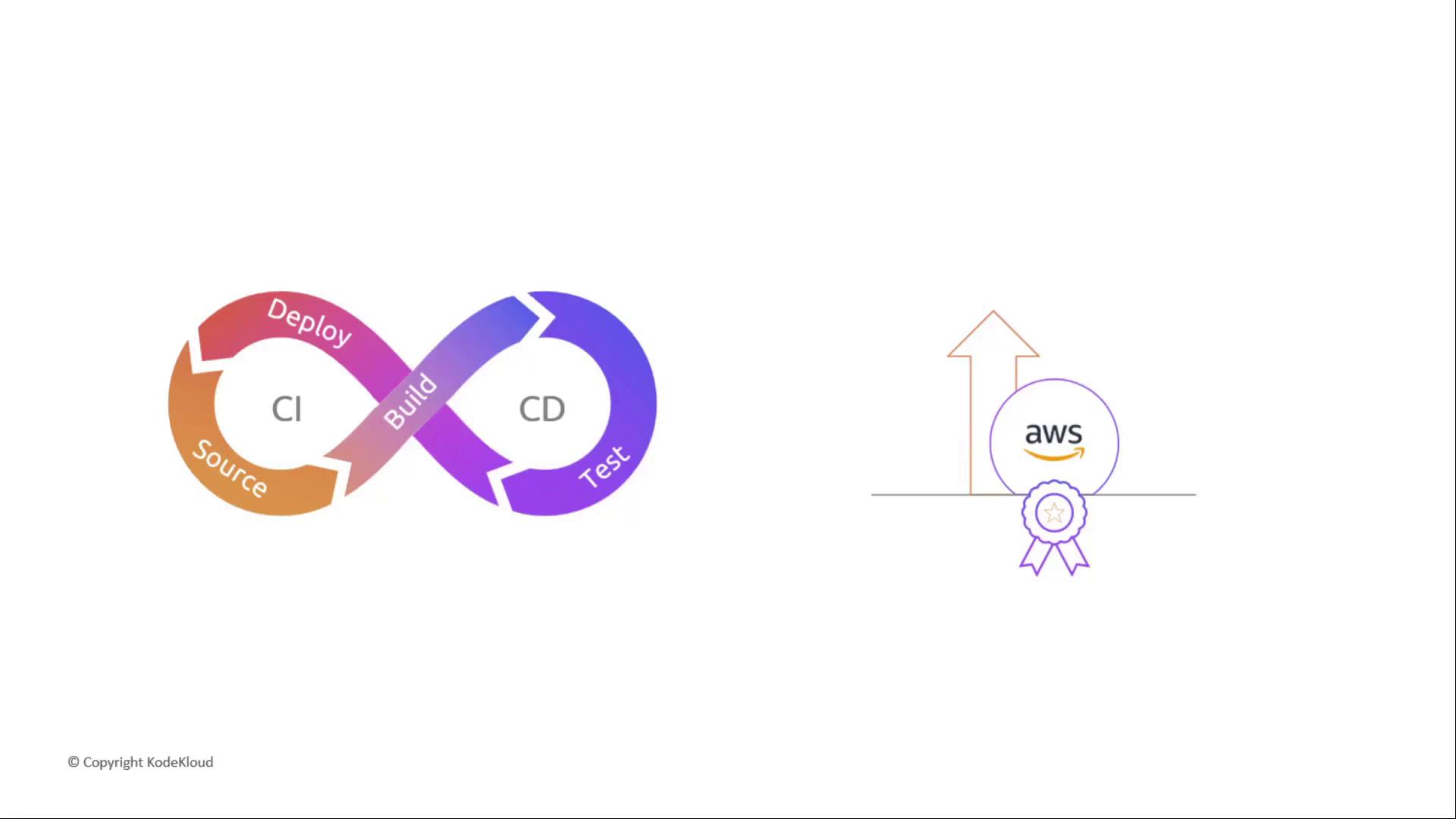AWS CodePipeline (CI/CD Pipeline)
Basics of AWS CodePipeline
CodePipeline Basics
Welcome to our comprehensive guide on AWS CodePipeline. In this article, we’ll cover the key features and benefits of CodePipeline, explain continuous integration and continuous delivery concepts, and review the core components that power a CI/CD workflow.

A Real-World Analogy: Cody’s Pipeline
Imagine Cody, a successful cabinet merchant whose business was growing faster than his production line could handle:
- He sourced premium wood from multiple suppliers.
- Each piece was sent to various shops for assembly.
- Finished cabinets were shipped by truck, train, boat, or plane.
The back-and-forth logistics created a backlog. One night, Cody dreamed of a magical piping system connecting every supplier, builder, and shipper—automating the entire flow of materials and finished goods. He called it Cody’s Pipeline.
Note
Cody’s Pipeline is an analogy for how AWS CodePipeline automates your software delivery process.
![]()
What Is AWS CodePipeline?
AWS CodePipeline is a fully managed CI/CD service that orchestrates your release workflow:
- Continuous Integration (CI): Merge and build code changes automatically.
- Continuous Delivery (CD): Test and deploy updates without manual steps.

A typical CodePipeline workflow includes four primary stages:
| Stage | Purpose | Example Tool |
|---|---|---|
| Source | Retrieve code artifacts from repos or buckets. | AWS CodeCommit, GitHub, S3 |
| Build | Compile, package, or transpile source code. | AWS CodeBuild, Jenkins |
| Test | Execute automated tests (unit, integration). | AWS CodeBuild, custom scripts |
| Deploy | Release to environments: containers, VMs, Lambda. | ECS, EKS, EC2, AWS Lambda |
When one stage succeeds, the pipeline advances automatically. You can add manual approvals or custom actions at any point.
Benefits of AWS CodePipeline
- Automation: Reduce manual steps and human errors.
- Scalability: Automatically scale pipelines and build resources.
- Visibility: Monitor execution history, logs, and notifications per stage.
- Customization: Integrate third-party tools, add manual approvals, or run custom scripts.

Warning
Be mindful of resource usage and execution costs. Review AWS Pricing before enabling long-running pipelines.
By adopting CodePipeline, teams can accelerate release cycles, maintain high quality, and improve time to market through continuous integration and continuous delivery.
Next Steps
In the next section, we’ll dive into real-world use cases and walk you through creating your very first pipeline.
Links and References
Watch Video
Watch video content